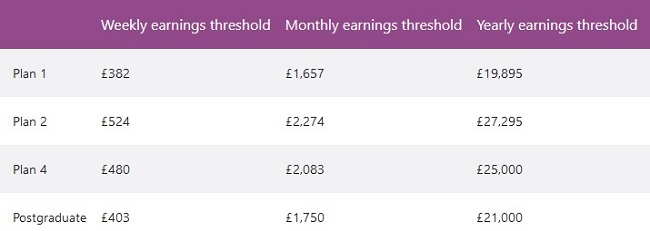Almost everyone agrees that taking out a student loan is the best method to pay for higher education, but how much will those loans end up costing you? This section will walk you through the repayment terms.
If you plan to earn a degree from a higher education university, you should be prepared to apply for and receive some kind of student loan. That’s not a terrible thing at all; in most cases, they’re the best and least expensive method to finance additional schooling.
Calculating how much you will have to pay back can be difficult because the amount is determined by a variety of other factors, such as how much money you go on to make and whatever repayment plan you are on.
How do student loans work?
There are two primary categories of expenses that students generally use university loans to address when applying to and attending higher education. Maximum annual tuition is £9,250.
The second group consists of monthly payments called “maintenance fees”, which are meant to offset some of the costs of actually living there. Studying a university, where you want to live while school, and, most importantly, how much money your parents make all have a significant impact on how much money you will be able to borrow.
For some groups, such as those studying degrees in engineering or science and have enlisted in the military forces, grants and bursaries are available to help cover the cost of tuition.
Your monthly payment, when you must begin making payments, and when your debt will be forgiven are all determined by the repayment program you choose.
How do I know which plan I’m on?
There are four plans. Plan 1, Plan 2, Plan 4 and Postgraduate Loan.
You’re on Plan 1 if you are:
- Student whose course started before 1 September 2012
- Student whose course started on or after 1 September 1998
- Student whose course started between 1 September 1998, and 1 September 2012
- Student whose course started on or after 1 September 1998
You’re on Plan 2 if you are:
- An Student whose course started on or after 1 September 2012
- An Student whose course started on or after 1 September 2012
- Someone who took out an Advanced Learner Loan on or after 1 August 2013
You’re on Plan 4 if you are:
- A Student who started a course on or after 1 September 1998
- An Student who started a course in after 1 September 1998
You’re on a Postgraduate Loan repayment plan if you are:
- An student who took out a Postgraduate Master’s Loan on or after 1 August 2016
- An student who took out a Postgraduate Doctoral Loan on or after 1 August 2018
- An student who started a postgraduate course on or after 1 August 2016
When will I start repaying my student loan?
When you start repaying depends on which plan you’re on. Once you’ve used the guide above to figure out which one applies to you it’s easy to work out.
There are weekly, monthly and yearly earnings thresholds, so if you earn more than that, you’ll start making payments. Repayments are between 6% and 9% of anything you earn over the threshold.
Student loans earnings thresholds

Currently, these are the minimum and maximum amounts allowed by law, although they may be amended by the government in the future.
Keep in mind that student loans are forgiven after a set number of years, so unless you have a very high income or a very small loan, you are unlikely to pay back the full amount you borrowed.
How much will I repay each month?
The simplest and most practical approach to conceptualize student loans is as a graduated tax, which is paid only when a certain income threshold has been reached and for a certain time period.
For those on Plans 1, 2, or 4, the additional earnings tax rate is 9%. Borrowers in the post-graduate plan are subject to a 6 percent premium above the threshold. For those earning average wages, this amounts to a negligible sum.
An individual on Plan 1 with an annual income of £27,000 would have a modest repayment requirement of just £53 per month. If you make £21,000 per year and enroll in Plan 2, your monthly premium will be only £11.
Calculate your repayment amount by subtracting the threshold from your pretax tax on a weekly, monthly, or yearly basis. To get the last 9%, subtract the initial 10%. This is how much you’ll pay per week, month, or year.
You must maintain making payments until either the government forgives your loan or you pay it off in full.
As long as your income keeps you over that line, you won’t be taxed until that threshold even if it drops below that line temporarily. You won’t have to make any repayments if your income is below the threshold.
When will my student loan be wiped?
Again, this is dependent on your specific plan.
- If you borrowed for the 2005-6 school year or earlier, your Plan 1 loan will be forgiven when you turn 65
- If you took out a Plan 1 loan after 2006–2007, it will be forgiven 25 years from the April on which you were originally scheduled to begin making loans
- The interest on Plan 2 loans is forgiven 30 years after the original repayment date in April
- For Plan 4 loans, forgiveness occurs when the borrower reaches age 65 or 30 years have passed after the original April payment was due
Do student loans affect my credit rating?
No. There is no impact on your credit score or history from student loans. If your income slips below the threshold, you can stop making payments altogether. Your ability to make mortgage payments will be considered as part of the approval process.
The interest you end up paying can be reduced by making prepayments on a loan if you are a high income and can afford to pay it off in full before it expires. This makes little sense, however, because most borrowers cannot afford to pay back the principal amount of the loan, let alone the interest.

